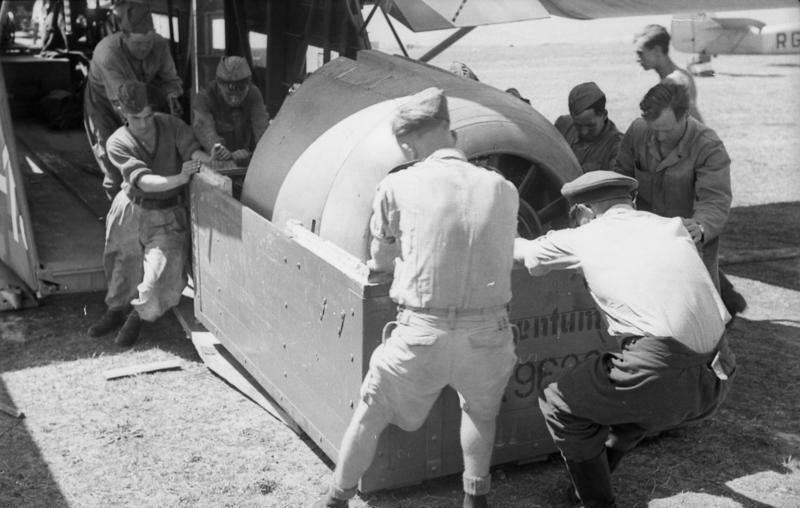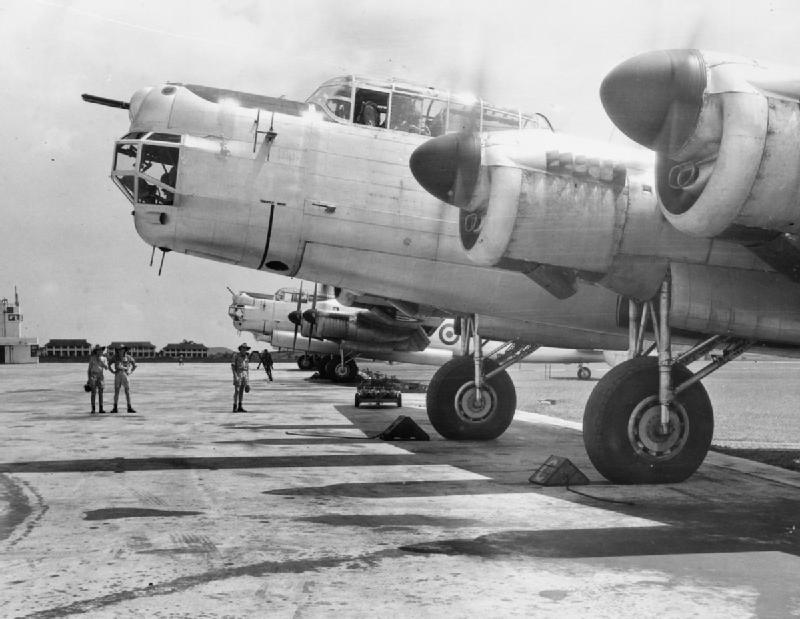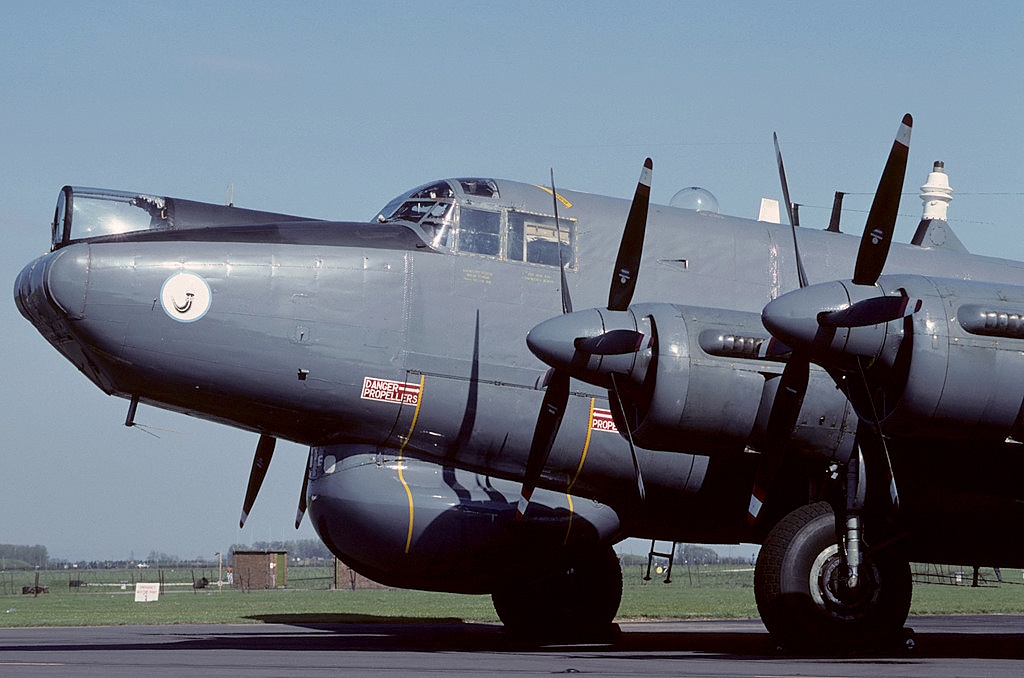Power-egg on:
[Wikipedia]
[Google]
[Amazon]
 A power-egg is a complete "unitized" modular engine installation, consisting of engine and all ancillary equipment, which can be swapped between suitably designed equipment, with standardised quick-changing attachment points and connectors.
In aircraft so designed the power-egg is typically removed before mean time to failure is reached and a fresh one installed, the removed engine then being sent for maintenance. Spare power-eggs may be stored in sealed containers, to be opened when needed.
The power-egg or ''Kraftei'' format was used in some German Second World War era aircraft, particularly for twin or multi-engined airframe designs. It existed in two differing formats – the initial ''Motoranlage'' format which used some specialized added components depending on what airframe it was meant for use on, and the ''Triebwerksanlage'' format, a more complete unitization format usually including exhaust and oil cooling systems.
A power-egg is a complete "unitized" modular engine installation, consisting of engine and all ancillary equipment, which can be swapped between suitably designed equipment, with standardised quick-changing attachment points and connectors.
In aircraft so designed the power-egg is typically removed before mean time to failure is reached and a fresh one installed, the removed engine then being sent for maintenance. Spare power-eggs may be stored in sealed containers, to be opened when needed.
The power-egg or ''Kraftei'' format was used in some German Second World War era aircraft, particularly for twin or multi-engined airframe designs. It existed in two differing formats – the initial ''Motoranlage'' format which used some specialized added components depending on what airframe it was meant for use on, and the ''Triebwerksanlage'' format, a more complete unitization format usually including exhaust and oil cooling systems.
 A scheme for unitised engine installations was initiated by the Air Ministry in 1937 and after consultation with the Society of British Aircraft Constructors (SBAC) a system was devised allowing standardised dimensions and bulkhead fittings for both inline and radial engine installations of similar power.
A scheme for unitised engine installations was initiated by the Air Ministry in 1937 and after consultation with the Society of British Aircraft Constructors (SBAC) a system was devised allowing standardised dimensions and bulkhead fittings for both inline and radial engine installations of similar power.
 The
The  After an early "Power Unit" installation was devised by Rolls-Royce (RR) for the Merlin X and used in the Armstrong Whitworth Whitley and Vickers Wellington, a more advanced "Power Plant" design was devised for the Merlin XX, a unitized Merlin XX-series engine installation and nacelle being designed and first used on the Beaufighter Mark II which was later also used on the
After an early "Power Unit" installation was devised by Rolls-Royce (RR) for the Merlin X and used in the Armstrong Whitworth Whitley and Vickers Wellington, a more advanced "Power Plant" design was devised for the Merlin XX, a unitized Merlin XX-series engine installation and nacelle being designed and first used on the Beaufighter Mark II which was later also used on the  A new installation was subsequently designed as the "Universal Power Plant" (UPP) radiator and cowling installation developed for the
A new installation was subsequently designed as the "Universal Power Plant" (UPP) radiator and cowling installation developed for the
"Interchangeability"
a 1939 ''Flight'' article
a 1944 ''Flight'' article
a 1942 ''Flight'' article
a 1942 advertisement in ''Flight'' Aircraft engines
 A power-egg is a complete "unitized" modular engine installation, consisting of engine and all ancillary equipment, which can be swapped between suitably designed equipment, with standardised quick-changing attachment points and connectors.
In aircraft so designed the power-egg is typically removed before mean time to failure is reached and a fresh one installed, the removed engine then being sent for maintenance. Spare power-eggs may be stored in sealed containers, to be opened when needed.
The power-egg or ''Kraftei'' format was used in some German Second World War era aircraft, particularly for twin or multi-engined airframe designs. It existed in two differing formats – the initial ''Motoranlage'' format which used some specialized added components depending on what airframe it was meant for use on, and the ''Triebwerksanlage'' format, a more complete unitization format usually including exhaust and oil cooling systems.
A power-egg is a complete "unitized" modular engine installation, consisting of engine and all ancillary equipment, which can be swapped between suitably designed equipment, with standardised quick-changing attachment points and connectors.
In aircraft so designed the power-egg is typically removed before mean time to failure is reached and a fresh one installed, the removed engine then being sent for maintenance. Spare power-eggs may be stored in sealed containers, to be opened when needed.
The power-egg or ''Kraftei'' format was used in some German Second World War era aircraft, particularly for twin or multi-engined airframe designs. It existed in two differing formats – the initial ''Motoranlage'' format which used some specialized added components depending on what airframe it was meant for use on, and the ''Triebwerksanlage'' format, a more complete unitization format usually including exhaust and oil cooling systems.
Applications
Germany
Inline and radial engines were both incorporated into the ''Kraftei'' concept: the Junkers Jumo 211 was a pioneering example of engine unitization, as used on both the Junkers Ju 88 using a novel annular radiator for both main engine coolant and engine oil cooling needs (viewable on the National Museum of the U.S. Air Force's restored Ju 88D-1 reconnaissance aircraft ), with exactly the same nacelle packaging used to power the Messerschmitt Me 264 V1's first flights. Both the examples of the Dornier Do 217 medium bomber powered by inline engines, and the Axis Powers' largest-flown powered aircraft of any type, the Blohm & Voss BV 238 flying boat used essentially the same unitized Daimler-Benz DB 603 powerplants, complete with "chin" radiators under the nacelles as integral components. A differing ''Kraftei'' physical packaging is also believed to have been crafted by theHeinkel
Heinkel Flugzeugwerke () was a German aircraft manufacturing company founded by and named after Ernst Heinkel. It is noted for producing bomber aircraft for the Luftwaffe in World War II and for important contributions to high-speed flight, with ...
firm for the DB 603 engines used on its Heinkel He 219A night fighter, as what appears to be the same exact engine installation design used for the He 219A was also used for the quartet of ordered airframes for the same firm's He 177B four-DB 603-engined heavy bomber design's prototype series, as both airframe types' engine "units" used annular radiators and cylindrical cowls of identical appearance to enclose them.
The air-cooled BMW 801 fourteen-cylinder, twin-row radial engine was also provided in both formats for a number of German designs, especially for twin and multi-engined airframes, with the "M" or "T" first suffix letter designating whether it was a ''Motoranlage'' (the original format of the ''Kraftei'' concept) or the more comprehensively consolidated ''Triebwerksanlage'' format unitized powerplant – the BMW-designed forward cowling ring always used with the 801 incorporated the engine's oil cooler, making it an easy task for aviation engineers to use for such a "unitized" mounting concept.
One known surviving ''Motoranlage''-packaged BMW 801 radial still exists and is on restored display at the New England Air Museum, Bradley International Airport, Windsor Locks, CT, with preserved examples of a Ju 88R-1 night fighter and Ju 388L-1 reconnaissance aircraft, one each in the United Kingdom and the United States respectively, also having unitized ''Kraftei''-installation BMW 801 radials on them.
Soviet Union
Project 651E, originally envisaged as a modification of the Juliett-class submarine, consisted of a small mostly self-contained additional 600 kW nuclear reactor, model VAU-6, the so-called Dollezhal egg. This nuclear powerpack aimed to greatly prolong submerged capabilities of what was otherwise a normal diesel-electric submarine with long duration idling and underwater recharging of batteries. The system was developed but did not see unclassified service through 1985.United Kingdom
 A scheme for unitised engine installations was initiated by the Air Ministry in 1937 and after consultation with the Society of British Aircraft Constructors (SBAC) a system was devised allowing standardised dimensions and bulkhead fittings for both inline and radial engine installations of similar power.
A scheme for unitised engine installations was initiated by the Air Ministry in 1937 and after consultation with the Society of British Aircraft Constructors (SBAC) a system was devised allowing standardised dimensions and bulkhead fittings for both inline and radial engine installations of similar power.
 The
The Bristol Aeroplane Company
The Bristol Aeroplane Company, originally the British and Colonial Aeroplane Company, was both one of the first and one of the most important British aviation companies, designing and manufacturing both airframes and aircraft engines. Notable a ...
devised an installation known as a "power egg" for the Hercules engine in 1938, an example of which was exhibited at the 1938 Paris Aeronautical Salon. The Hercules installation was used on the Bristol Beaufighter
The Bristol Type 156 Beaufighter (often called the Beau) is a British multi-role aircraft developed during the Second World War by the Bristol Aeroplane Company. It was originally conceived as a heavy fighter variant of the Bristol Beaufort ...
, Armstrong Whitworth Albemarle
The Armstrong Whitworth A.W.41 Albemarle was a twin-engine military transport aircraft, transport aircraft developed by the United Kingdom, British aircraft manufacturer Armstrong Whitworth and primarily produced by A.W. Hawksley Ltd, a subsid ...
, Vickers Wellington, Short Stirling
The Short Stirling was a British four-engined heavy bomber of the Second World War. It has the distinction of being the first four-engined bomber to be introduced into service with the Royal Air Force (RAF).
The Stirling was designed during t ...
, and Handley Page Halifax.
 After an early "Power Unit" installation was devised by Rolls-Royce (RR) for the Merlin X and used in the Armstrong Whitworth Whitley and Vickers Wellington, a more advanced "Power Plant" design was devised for the Merlin XX, a unitized Merlin XX-series engine installation and nacelle being designed and first used on the Beaufighter Mark II which was later also used on the
After an early "Power Unit" installation was devised by Rolls-Royce (RR) for the Merlin X and used in the Armstrong Whitworth Whitley and Vickers Wellington, a more advanced "Power Plant" design was devised for the Merlin XX, a unitized Merlin XX-series engine installation and nacelle being designed and first used on the Beaufighter Mark II which was later also used on the Miles M.20
The Miles M.20 was a Second World War British fighter developed by Miles Aircraft in 1940. It was designed as a simple and quick-to-build "emergency fighter" alternative to the Royal Air Force's Spitfires and Hurricanes should their production ...
, Avro Lancaster
The Avro Lancaster is a British Second World War heavy bomber. It was designed and manufactured by Avro as a contemporary of the Handley Page Halifax, both bombers having been developed to the same specification, as well as the Short Stirlin ...
and Avro York
The Avro York was a British transport aircraft developed by Avro during the Second World War. The design was derived from the Avro Lancaster heavy bomber, several sections of the York and Lancaster being identical. Due to the importance of L ...
, and the post-war CASA 2.111
The CASA 2.111 was a medium bomber derived from the Heinkel He 111 and produced in Spain under licence by Construcciones Aeronáuticas SA (CASA). The 2.111 models differed significantly in details from Heinkel's wartime He 111H design while using ...
. Merlin Power Plant production rose from just over 100 in 1939 to nearly 14,000 by 1944, mostly destined for the Lancaster.
 A new installation was subsequently designed as the "Universal Power Plant" (UPP) radiator and cowling installation developed for the
A new installation was subsequently designed as the "Universal Power Plant" (UPP) radiator and cowling installation developed for the Avro Lincoln
The Avro Type 694 Lincoln is a British four-engined heavy bomber, which first flew on 9 June 1944. Developed from the Avro Lancaster, the first Lincoln variants were initially known as the Lancaster IV and V; these were renamed Lincoln I and ...
(Merlin 65, 68, and 85) and also used on the Vickers Windsor (Merlin 85), and subsequently used on the Avro Tudor
The Avro Type 688 Tudor was a British piston-engined airliner based on Avro's four-engine Lincoln bomber, itself a descendant of the famous Lancaster heavy bomber, and was Britain's first pressurised airliner. Customers saw the aircraft as ...
(Merlin 100-series), Canadair North Star/Argonaut (Merlin 600-series), and Avro Shackleton (Griffon 61 and 62).
Capable of mounting either the 27 litre Merlin or the larger 37 litre Griffon, the UPP attached to the nacelle firewall via the SBAC standard circular bulkhead. In the North Star (A Canadian-built variant of the Douglas DC-4) the UPP design had to be changed slightly due to having to use the non-standard Douglas DC-4 bulkhead attachment, resulting in the North Star's cowling panels being tapered slightly rather than parallel-sided. The UPP installation had the advantage that all engines were interchangeable between nacelle positions, i.e., an inboard engine could be exchanged with an outboard engine, and engine types (Merlin or Griffon) and Mark No.s could be mixed and flown on the same aircraft, a Hucknall Lancaster test bed being flown with two Merlins for the North Star in one position, and with two Merlins for the Tudor in the others.
Rolls-Royce continued the practice of unitised engine packages post-war with the Dart
Dart or DART may refer to:
* Dart, the equipment in the game of darts
Arts, entertainment and media
* Dart (comics), an Image Comics superhero
* Dart, a character from ''G.I. Joe''
* Dart, a ''Thomas & Friends'' railway engine character
* Dar ...
and Tyne Tyne may refer to:
__NOTOC__ Geography
* River Tyne, England
*Port of Tyne, the commercial docks in and around the River Tyne in Tyne and Wear, England
*River Tyne, Scotland
* River Tyne, a tributary of the South Esk River, Tasmania, Australia
Peop ...
turboprops, and later with podded jet engines such as the Conway and RB211 being supplied as complete RR-designed units with all cowling panels and nacelle fittings, including thrust reverser, ready for attachment to the engine pylon.
United States
In the United StatesPratt & Whitney
Pratt & Whitney is an American aerospace manufacturer with global service operations. It is a subsidiary of Raytheon Technologies. Pratt & Whitney's aircraft engines are widely used in both civil aviation (especially airlines) and military aviat ...
produced a R-2180-E Twin Wasp E "power egg" installation certificated in 1945 for use as an engine upgrade for the Douglas DC-4, however finding few buyers, it was eventually only used on the Saab 90 Scandia
The Saab 90 Scandia was a civil passenger aeroplane, manufactured by the Svenska Aeroplan Aktiebolaget (SAAB), in Linköping, Sweden. In 1944, as it was becoming clear that hostilities in Europe (the Second World War) would soon be at an end, SA ...
."World Encyclopedia of Aero Engines - 5th edition" by Bill Gunston, Sutton Publishing, 2006, P.164
See also
*Avia S-199
The Avia S-199 is a propeller-driven Messerschmitt Bf 109G-based fighter aircraft built after World War II utilizing the Bf 109G airframe and a Junkers Jumo 211F engine in place of the original and unavailable Daimler-Benz DB 605 engine. It is ...
, Bf-109 airframes fitted with engines and propellers of the Heinkel He 111 bomber
* Powerpack (drivetrain)
* Power module
* Prime mover
References
{{ReflistExternal links
"Interchangeability"
a 1939 ''Flight'' article
a 1944 ''Flight'' article
a 1942 ''Flight'' article
a 1942 advertisement in ''Flight'' Aircraft engines